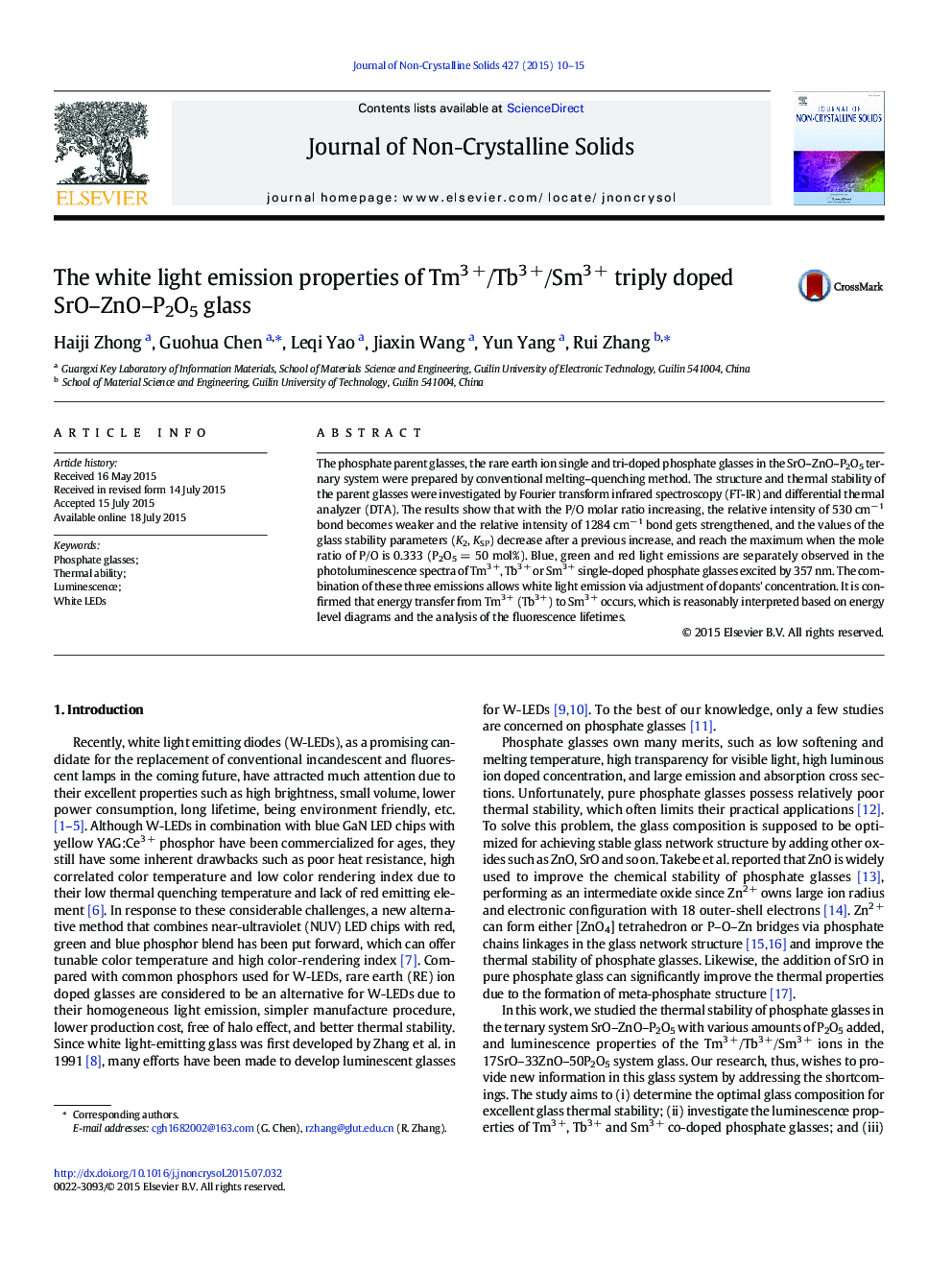| Article ID | Journal | Published Year | Pages | File Type |
|---|---|---|---|---|
| 1480658 | Journal of Non-Crystalline Solids | 2015 | 6 Pages |
•The thermal stability and glass structure of phosphate base glasses were studied.•The luminescence properties of the doped glasses were investigated.•Tri-doped phosphate glasses realize white light emission under 357 nm excitation.•Energy transfer from Tm3 + (Tb3 +) to Sm3 + occurs.
The phosphate parent glasses, the rare earth ion single and tri-doped phosphate glasses in the SrO–ZnO–P2O5 ternary system were prepared by conventional melting–quenching method. The structure and thermal stability of the parent glasses were investigated by Fourier transform infrared spectroscopy (FT-IR) and differential thermal analyzer (DTA). The results show that with the P/O molar ratio increasing, the relative intensity of 530 cm− 1 bond becomes weaker and the relative intensity of 1284 cm− 1 bond gets strengthened, and the values of the glass stability parameters (K2, KSP) decrease after a previous increase, and reach the maximum when the mole ratio of P/O is 0.333 (P2O5 = 50 mol%). Blue, green and red light emissions are separately observed in the photoluminescence spectra of Tm3 +, Tb3 + or Sm3 + single-doped phosphate glasses excited by 357 nm. The combination of these three emissions allows white light emission via adjustment of dopants' concentration. It is confirmed that energy transfer from Tm3 + (Tb3 +) to Sm3 + occurs, which is reasonably interpreted based on energy level diagrams and the analysis of the fluorescence lifetimes.
